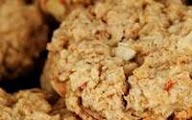FISÁLIS (physalis angulata) / PHYSALIS
 A fisális, também chamada de tomate capucho, entre outros nomes, é uma planta herbácea, perene, da família das Solanaceae, como a batata (Solanum tuberosum) e o tomate (Solanum lycopersicum).
A fisális, também chamada de tomate capucho, entre outros nomes, é uma planta herbácea, perene, da família das Solanaceae, como a batata (Solanum tuberosum) e o tomate (Solanum lycopersicum).
Este género Physalis, destaca-se na família das Solenaceae por apresentar um cálice (conjunto de sépalas de uma flor) frutífero acrescente, vesiculoso e intumescido, envolvendo completamente o fruto.
A fisális existe naturalmente em todas as regiões temperadas, quentes e subtropicais do mundo.
O fruto possui fibra, betacarotenos (antioxidante) e acetilcolina (diminui a pressão arterial). É rico em vitamina A, B, C, ferro e fósforo.
Possui 50 calorias por 100 g de fruto, o que faz deste fruto uma boa opção para diabéticos.
GELEIA DE FISÁLIS
ingredientes
|
quantidades
|
procedimento
|
fisális
|
200 g
|
Coloque a água e o açúcar ao lume para fazer uma calda. Junte os frutos cortados em quartos e deixe ferver cerca de 30 minutos ou até ter consistência de geleia.
|
açúcar
|
4 c. de sopa
| |
água
|
100 g
| |
FILETE DE PEIXE COM MOLHO DE FISÁLIS
ingredientes
|
quantidades
|
procedimento
|
filete de peixe
|
300 g
|
Tempere os filetes com sal, pimenta e sumo de limão. Deixe 1 ou 2 horas. Passe os filetes por farinha e frite-os com um pouco de manteiga ou azeite.
Faça o molho cozinhando a cebola na manteiga e depois de translucida junte o vinho, bem como o puré das fisális (frutos moídos no robot e coados). Junte as natas. Coloque o molho sobre o peixe.
Sirva com arroz branco, batata e/ou legumes salteados.
|
sal e pimenta
|
qb
| |
farinha e limão
|
qb
| |
Cebola picada
|
1 c. de sopa
| |
manteiga
|
1 c. de sopa
| |
vinho branco
|
1/2 cup
| |
fisális
|
200 g
| |
natas
|
2 c. de sopa
|
____________________________________________
PHYSALIS.
Physalis, also called husk tomato, among other names, is a herbaceous, perennial plant of the Solanaceae family, such as tomatos (Solanum tuberosum) and tomatoes (Solanum lycopersicum).
This genus Physalis, stands out in the family os Solenaceae for presenting an add fruitful, vesicular and swollen chalice (set of sepals of a flower), completely involving the fruit.
Physalis exists naturally in all temperate, warm and subtropical regions of the world.
This fruit has medicinal activity, namely in strengthening the immune system, in relieving sore throats and in reducing the cholesterol rate.
There are references of medical use for all parts of the plant.
The fruit has fiber, beta carotene (antioxidant) and acetylcholine (lowers blood pressure). It is rich in vitamin A, B, C, iron and phosphorus.
It has 50 calories per 100 g of fruit, which makes this fruit a good option for diabetics.
Physalis, also called husk tomato, among other names, is a herbaceous, perennial plant of the Solanaceae family, such as tomatos (Solanum tuberosum) and tomatoes (Solanum lycopersicum).
This genus Physalis, stands out in the family os Solenaceae for presenting an add fruitful, vesicular and swollen chalice (set of sepals of a flower), completely involving the fruit.
Physalis exists naturally in all temperate, warm and subtropical regions of the world.
This fruit has medicinal activity, namely in strengthening the immune system, in relieving sore throats and in reducing the cholesterol rate.
There are references of medical use for all parts of the plant.
The fruit has fiber, beta carotene (antioxidant) and acetylcholine (lowers blood pressure). It is rich in vitamin A, B, C, iron and phosphorus.
It has 50 calories per 100 g of fruit, which makes this fruit a good option for diabetics.
PHYSALIS JELLY
Ingredients and quantities
200 g of physalis
4 tablespoon of sugar
100 g of water
Procedure:
Put the water and sugar on the fire to make a syrup. Add the fruit cut in quarters and let it boil fr about 30 minutes or until a jelly consistency.
FISH FILLET WITH PHYSALIS SAUCE
Ingredients and quantities
300 g of fish fillet
lemon juice
salt
pepper
flour
1 tablespoon of chopped onion
1 tablespoon of butter
1/2 cuo of white wine
200 g of physalis
2 tablespoon cream
Procedure:
Season the fillets with salt, pepper and lemon juice. Leave for 1 or 2 hours. Pass the fillets through flour and fry them with a little butter or olive oil.
Make the sauce by cooking the onion in butter and let it be translucent, add the wine, as well as the purée of the physalis (fruit grund in the robot and strained). Add the cream. Place the sauce over the fish.
Serve with white rice, potatoes and/or sautéed vegetables.






